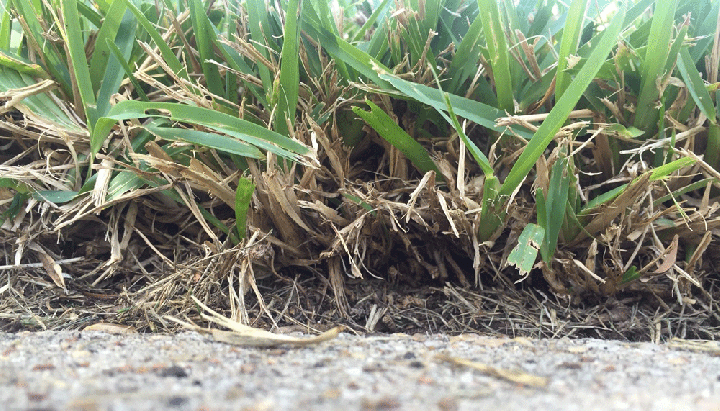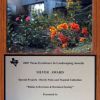Thatch in Lawns: Friend or Foe?
September 28, 2016 | By webadmin
What is thatch?
You’ve most likely heard the word “thatch” thrown around when you’re reading about lawn care or talking to a Pro. But you may not be sure exactly what thatch is. Because thatch can be both good and bad, it’s good to know exactly what thatch is and what causes it, if you’re concerned with keeping a healthy lawn.

Thatch is the layer of golden colored grass and other matter that settles just beneath the green grass blades. It is actually decaying organic material that builds up over time; both from the blades that fall on the lawn after it’s cut, and growth that naturally dies away from the plant. Just as with anything that can be good for you, too much can cause problems.
How much thatch is good?
When healthy lawns have the right amount of thatch, the thatch, as it decomposes, releases nutrients to the soil, improving its texture. It also acts as a mulch, retaining water in summer, regulating soil temperatures in hot and cold seasons, and protects the lawn during foot traffic by giving it a sort of “cushion”. A thin layer ½-inch or less of thatch should be considered beneficial.
Thatch gone bad
Too much thatch in a lawn can cause problems. If the thatch build up under your lawn exceeds ½-inch thick, it can keep water and fertilizer from reaching the lawn’s roots. It can also keep sunlight from reaching lower grass blades, obstruct air circulation, and keep grass roots from growing deep into the soil. Grass roots could eventually grow up into the thatch, instead of into the soil where it will retain the most nutrients, water and oxygen. Plus, grass roots that grow into thatch leaves them exposed during winter when grasses go dormant and susceptible to drought during summer months without the protection of the soil.
As thatch retains more moisture without proper drainage, an overwatered lawn is now even more inclined to become infected with a fungal disease. As you can see, too much thatch causes a domino effect of problems.
Why does thatch build up?
Thatch can build up because of a few reasons. Some varieties of grass are less prone to thatch build-up, such as Zoysia. Lawns that are overwatered and over fertilized or if too many lawn clippings are allowed to continually build up on the lawn after mowing can also cause too much thatch. Soil compaction can be one of the biggest causes of excess thatch buildup.
Signs your lawn has too much thatch:
- Measure: is thatch more than a ½-inch thick?
- When you try to touch your soil through the grass, thatch that is thick and tough keeps your finger from touching the soil.
- There is too much thatch to see the crowns of your grass or even the soil beneath.
- Grass has a spongy feel when you walk on it.
How to reduce thatch
If your lawn has too much thatch, it could need dethatching, a process that is not often recommended except in extreme cases. Dethatching, because it uses a blade that goes under the grass to lift it up as it cuts out the thatch, can often damage your lawn in the process.
Performing core aeration on your lawn each year can help you prevent and naturally reduce excess thatch. Don’t over-fertilize or over-water your lawns, which will also lead to excess thatch.
